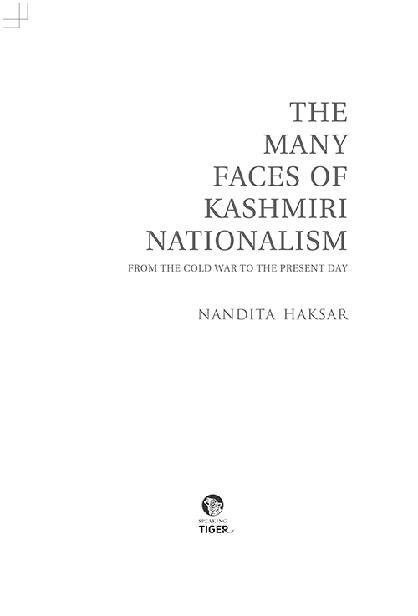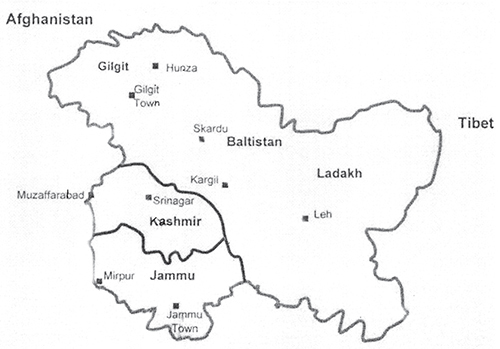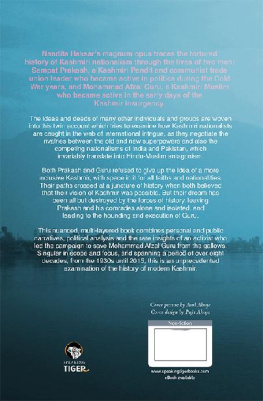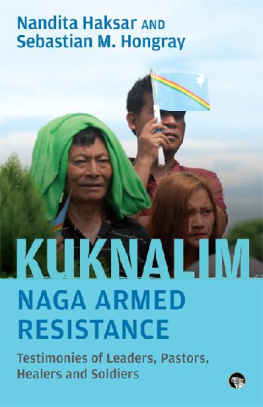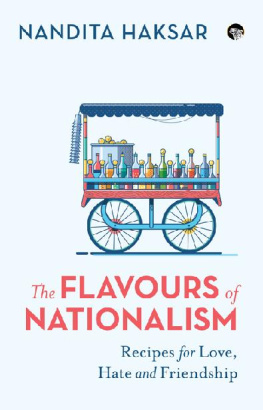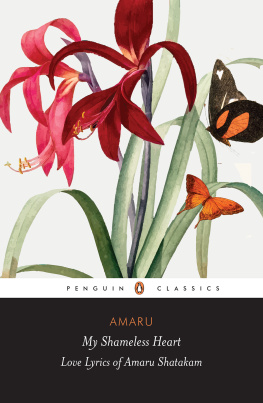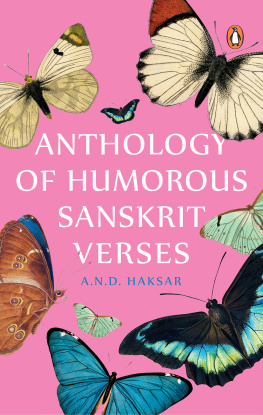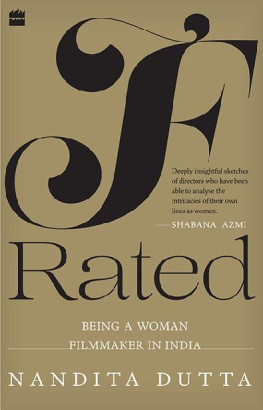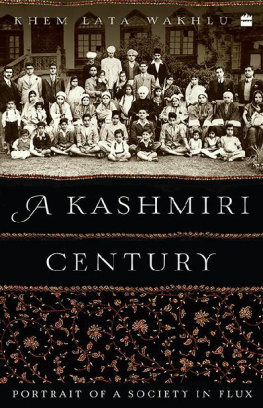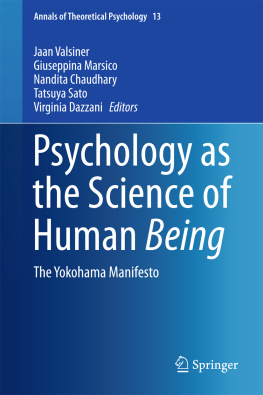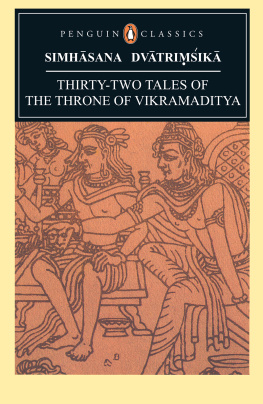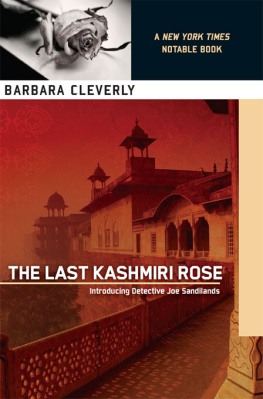About the book:
A fascinating and revealing examination of the political history of modern Kashmir through the lives of two men: Sampat Prakash, a Kashmiri Pandit and trade union leader, and Afzal Guru, a Kashmiri Muslim who was executed in connection with the 2001 attack on the Indian Parliament.
Nandita Haksars magnum opus traces the tortured history of Kashmiri nationalism through the lives of two men: Sampat Prakash, a Kashmiri Pandit and Communist trade union leader who became active in politics during the Cold War years, and Mohammad Afzal Guru, a Kashmiri Muslim who became active in the early days of the Kashmir insurgency. The ideas and deeds of many other individuals and groups are woven into this twin account which tries to examine how Kashmiri nationalists are caught in the web of international intrigue, as they negotiate the rivalries between the old and new superpowers and also the competing nationalisms of India and Pakistan, which invariably translate into Hindu-Muslim antagonism.
Both Prakash and Guru refused to give up the idea of a more inclusive Kashmir, with space in it for all faiths and nationalities. Their paths crossed at a juncture of history when both believed that their vision of Kashmir was possible. But their dream has been all but destroyed by the forces of history, leaving Prakash and his comrades alone and isolated, and leading to the hounding and execution of Guru.
This nuanced, multi-layered book combines personal and public narratives, political analysis and the rare insights of an activist who led the campaign to save Mohammad Afzal Guru from the gallows. Singular in scope and focus, and spanning a period of over eight decades, from the 1930s until 2015, this is an unprecedented examination of the history of modern Kashmir.
About the Author:
Nandita Haksar is a human rights lawyer, teacher, activist and writer. She has been instrumental in setting up the countrys first human rights courses at several universities. In 1983, she became the first person to challenge the infamous Armed Forces (Special Powers) Act (AFSPA) in the Supreme Court. She successfully led the campaign for the acquittal of one of the people framed in the Indian Parliament attack case, and has been taking up the cause of migrant workers in the Northeast.
Nanditas published works include Demystification of Law for Women (1986); Framing Geelani, Hanging Afzal: Patriotism in the Time of Terror (2009); Rogue Agent: How Indias Military Intelligence Betrayed the Burmese Resistance (2010); The Judgement That Never Came: Army Rule in North East India (with Sebastian Hongray, 2011); ABC of Naga Culture and Civilization (2011) and Across the Chicken Neck: Travels in North East India (2013).
CONTENTS
Map of the Princely State of Jammu and Kashmir, 1946.
INTRODUCTION
ALONG THE SILK ROUTE AGAIN
Bahar Kashmiri, a poet from the Valley, wrote in the 1940s:
From all sides I am assaulted,
The English, the Indians, the Afghans, the Pakistanis,
To whom should I complain, to whom should I tell my fate?
Capitalists, tyrants, oppressors, and friends, all want me
To become their accomplice,
With whom should I agree, with whom should I disagree?
To whom should I complain, to whom should I tell my fate?
These words reflect the agony of the Kashmiri people who have been caught in the web of political machinations and intrigue throughout the history of the Valley. This book traces the tortured history of Kashmiri nationalism, primarily through the lives of two men: Sampat Prakash, a Kashmiri Pandit and Communist trade union leader who became active in politics during the Cold War years, and Mohammad Afzal Guru, a Kashmiri Muslim who became politically active at the beginning of the Kashmir insurgency, coinciding with the end of the Cold War, the defeat of Soviet Union, and the start of the War on Terror. The stories of many other Kashmiris are also woven into this account.
The book also examines how Kashmiri nationalists have to negotiate the rivalries between superpowers, the competing nationalisms of India and Pakistan, which invariably translates into Hindu-Muslim antagonisms. The results of the latest elections of 2014 show how deeply divided the people of Jammu and Kashmir are along communal lines. The controversies surrounding the government formation reflect the long history of mobilization of people along religious lines and, more recently, the competing communalism of Hindu and Muslim extremism.
The two parties who have formed the government in Jammu and Kashmir, the Jammu and Kashmir Peoples Democratic Party (PDP) and the Bharatiya Janata Party (BJP), are as different as the North Pole is from the South Pole.
Some public leaders have hailed this alliance as a triumph of Indian democracy and an opportunity for reconciliation between the Hindus of Jammu and the Muslims of the Kashmir Valley. But there are those who warn that this could well be the beginning of the partitioning of the states peoples by two colluding communal blocks.
In the collective memory of the Kashmiris, their land has been under continuous foreign rule ever since the Mughal emperor Akbar invaded the Valley in 1586 and imprisoned Yusuf Shah Chak and later sent him to Bihar where he died in anonymity. He was the last independent king of Kashmir.
The Mughal rule in Kashmir ended with the invasion of the Valley by Ahmad Shah Durrani in 1751.There are innumerable stories about the brutalities committed by the Afghans during their rule which ended in 1819 when the Sikhs conquered Kashmir. The Sikh rule is remembered for the harsh treatment meted out to the Muslim subjects. The Jama Masjid at Srinagar was closed to the public for prayers and Muslims were forbidden to say Azan. Sikh rule came to end with the coming of the Dogra Raj in 1846.
It was the Dogras who united the entire Province of Jammu and Kashmir. One of Maharaja Ranjit Singhs most able generals, Gulab Singh (17921858) This treaty assured Gulab Singh that the trade in wool, shawls and tea would not be interfered with.
The Sikhs, and later the Dogras, controlled the lucrative overland Indo-Central Asian trade through Ladakh. Between 1919 to 1931, goods worth about Rs 285 million were exported through Ladakh to Xinjiang in present-day China, while merchandise valued at about Rs 330 million was imported from Xinjiang into Ladakh during the same period. However, the Indo-Central Asian trade through Ladakh, which scaled an unprecedented height of over Rs 68 million during the financial year 192021, finally ceased to flow after 1949 following the Communist takeover of Xinjiang. Even though the trade link was broken when the British imposed restrictions on exports of essential commodities from India to Central Asia during the height of Anglo-Soviet tensions, the influence of Central Asia on the culture is visible everywhere in the Kashmir Valley.
The Yarkandi Serai on the left bank of the Jhelum river near the Safa Kadal Bridge in Srinagar is a standing reminder of the ancient connections between Kashmir and Central Asia. This was where travellers from Central Asia rested, and their yaks and ponies laden with delicate porcelain grazed in the grounds surrounding the Eidgah.
Now the possibilities of reviving these old links through trade are opening up with the global shift from Europe to Asia. The ancient Silk Routes are being revived and railway lines, bridges and roads are being constructed to link Asia with Europe again. Pakistan-occupied Kashmir (PoK) shares borders with several countries: Pakistan, the Wakhan Corridor of Afghanistan and Tajikistan to the west, and the Xinjiang province of the Peoples Republic of China to the north. Ever since the Karakoram highway (KKH) was built to connect Pakistan with China via PoK, the geopolitical significance of PoK has increased manifold. PoK is a gateway to the Central Asian republics and to their expanding markets.
